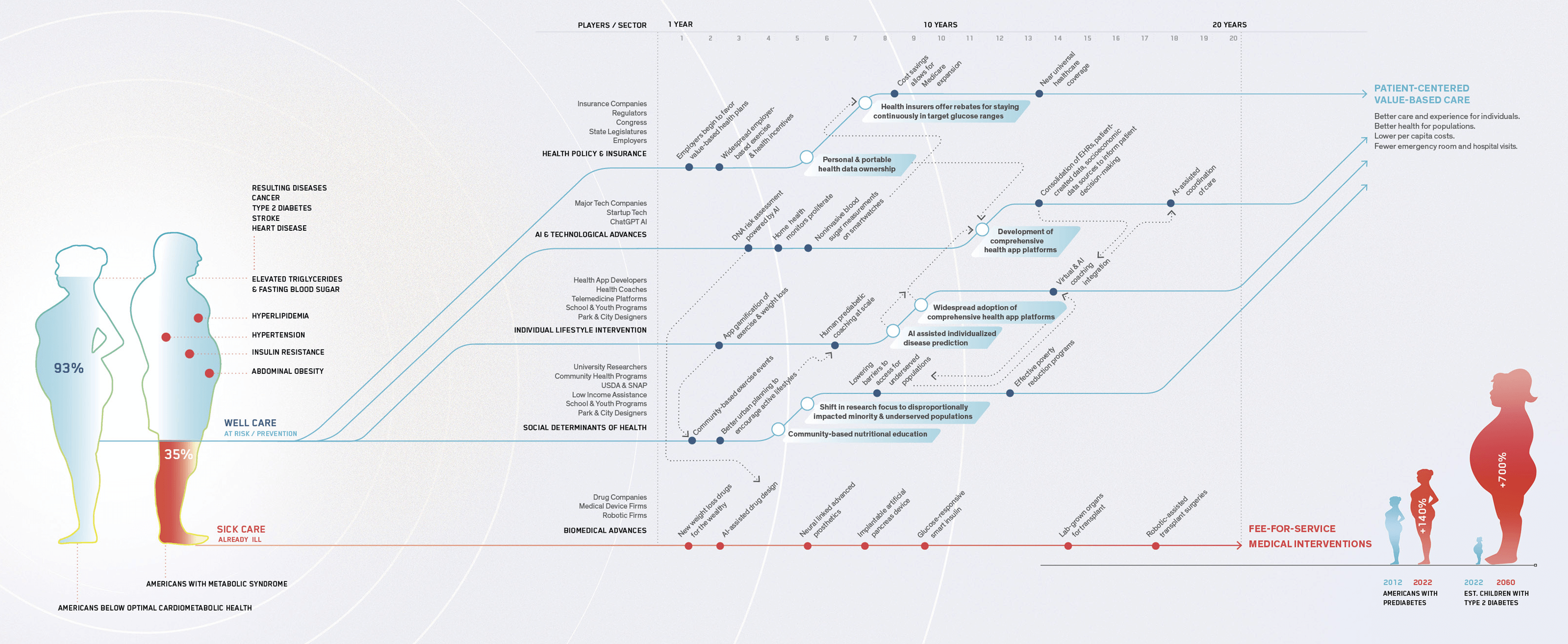Reimagining Healthcare Economics As A Human-centered System
-
21%National healthcare expenses paid by Medicare, 2021
-
6 IN 10Americans have a chronic health condition
MEDICAID
In 2023, Medicaid will serve more than 100 million people—fully one in three insured Americans. Unfortunately, recipients of the program often struggle to find primary care doctors and face long delays for surgery or specialty care. The result is that ERs are overused and fewer patients receive preventive screenings or consistent help managing chronic conditions. Medicare Advantage, created in 1997, is intended to incentivize doctors and health systems to keep patients healthy. Companies like Amazon, CVS and Walmart are experimenting with similar models in hopes of lowering costs and improving health outcomes.
The Pathway From Fee-based To Value-based Healthcare
EXAMPLE: METABOLIC SYNDROME & TYPE 2 DIABETES
Metabolic Syndrome
In the US, we spend trillions of dollars treating the conditions resulting from metabolic syndrome. While it is important to have interventions for those already ill, there is much more we can do. Obesity and metabolic syndrome and all the attendant complications are not inevitable. However, prevention will require a fundamental rethinking of our shared approach to healthcare. We will need a renewed focus on the social and economic determinants of health. Prevention will also require changes in our food system, and the layout of our cities, along with a deeper understanding of the health impact of poverty and inequality.
Metabolic syndrome is characterized by abdominal obesity, insulin resistance, hypertension and hyperlipidemia. The syndrome causes or contributes to numerous devastating diseases, including cancer, type 2 diabetes, strokes and heart disease, among others. Although Western countries are the most affected, metabolic syndrome has become a global condition, particularly in urban centers in emerging economies. The rise of this noncommunicable disease has become the major health challenge of modernity.
Diabetes and Prediabetes
- More than 130 million US adults have diabetes or prediabetes.
- Rates of type 2 diabetes among children are expected to rise 700% by 2060.
- The number of Americans with prediabetes has risen 40% in the last decade.
- 26 million elderly (half the population) have prediabetes.
- Without changing our approach, 1 in 3 Americans could have diabetes by 2050.
The total cost of metabolic syndrome, including the cost of healthcare and loss of potential economic activity, is in the trillions. The present trend is not sustainable unless a magic cure is found (unlikely) or concerted global, governmental and societal efforts are made to change the lifestyle that is promoting it.
Mohammad G. Saklayen
Professor of Medicine and Director of Nephrology Division at Wright State University

